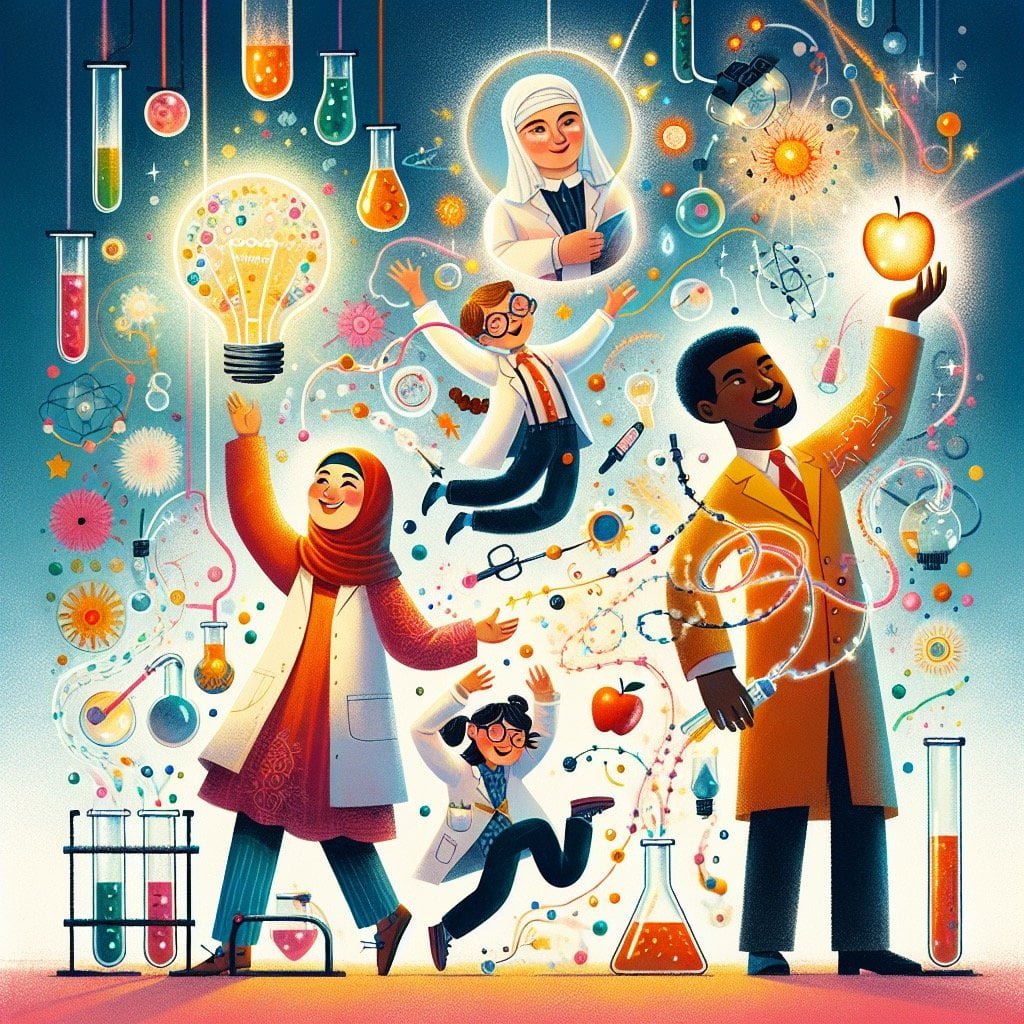Welcome to our blog, where we explore fascinating **Science Facts For Kids** that will spark curiosity and excitement in young minds! From learning about the Sun as a star and why sound can’t travel in space, to uncovering the surprising differences between bananas and strawberries, each post is packed with engaging information tailored for both younger and older children. Join us on a journey through the wonders of the natural world, where you’ll discover fun facts about lightning, koalas, octopuses, honey, Venus, bees, and rainbows. Get ready to delve into the fascinating world of science in a way that is educational, entertaining, and perfect for young learners. So, come along and let’s explore the amazing world of science together!
Science Facts For Kids
1. The Sun is a Star

For younger kids: The Sun is a big, bright star that gives us light and warmth.
For older kids: The Sun is a star located at the center of our solar system, mainly composed of hydrogen and helium, emitting light and heat energy.
Detailed explanation:Science Facts For Kids are important for introducing young minds to the wonders of the natural world. One such fact that never fails to fascinate children is that the Sun is actually a star.
Many kids are familiar with the concept that the Sun is a bright, hot ball of gas that lights up our sky during the day. However, what they may not realize is that the Sun is just one of billions of stars in the universe. In fact, the Sun is an average-sized star in the Milky Way galaxy.
Stars, including the Sun, are massive spheres of hot plasma held together by their own gravity. They generate energy through a process called nuclear fusion, where hydrogen atoms are smashed together to form helium. This process releases an enormous amount of energy in the form of light and heat, which is what we perceive as sunlight.
The Sun differs from other stars in that it is relatively close to Earth, making it appear much larger and brighter in our sky. Its energy sustains all life on our planet, providing warmth for plants to grow, animals to thrive, and humans to survive.
By learning that the Sun is a star, Science Facts For Kids can help children grasp the vastness of the universe and appreciate the beauty and complexity of the celestial bodies that surround us. It also serves as a reminder of how interconnected we are to the cosmos, and how important the Sun is to sustaining life on Earth.
Science Facts For Kids
2. Sound Can’t Travel in Space
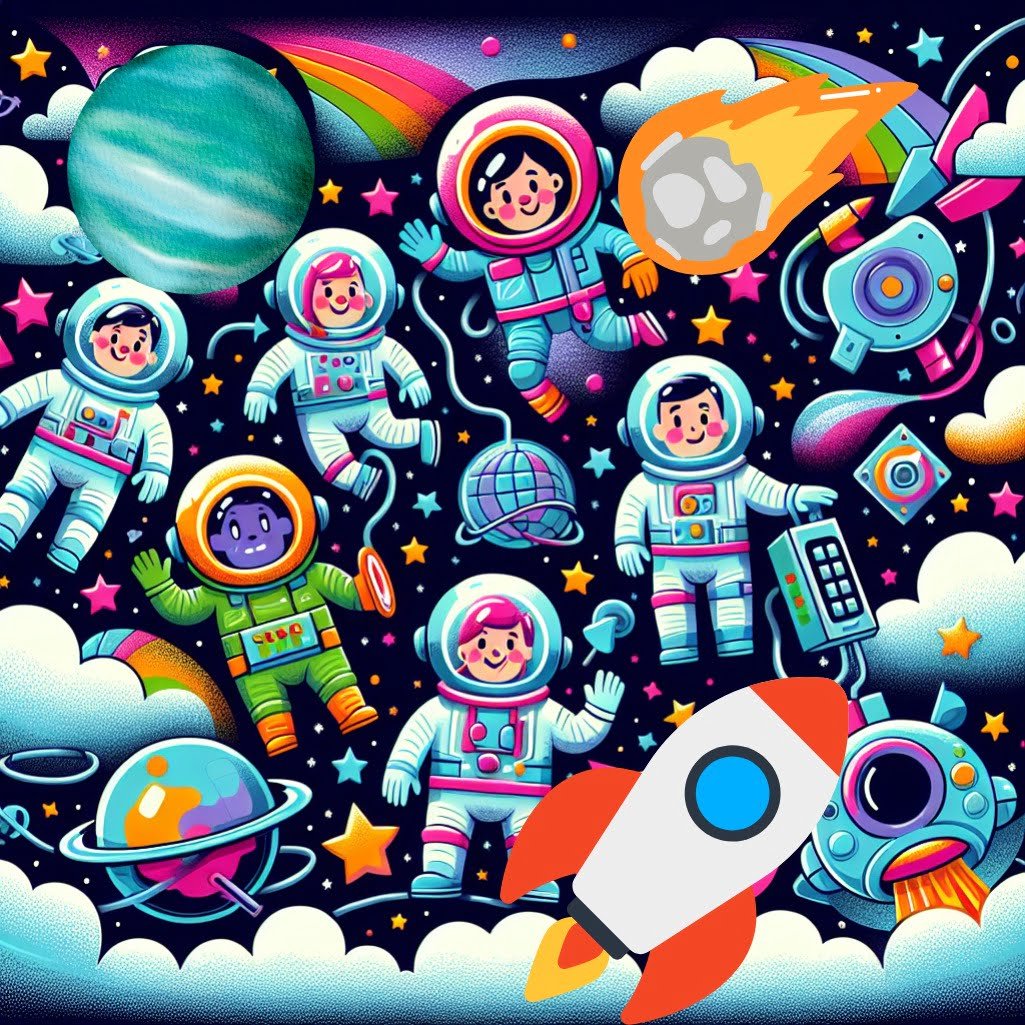
For younger kids: In space, no one can hear you scream because there’s no air for sounds to travel.
For older kids: Space is a vacuum without any medium for sound waves to move through, making it completely silent.
Detailed explanation:One of the most fascinating aspects of space is the absence of sound. It is a well-established scientific fact that sound cannot travel in the vacuum of space. This may seem counterintuitive to those of us who are used to hearing sound waves propagate through air or water, but the lack of a medium for sound to travel through in space makes it impossible for sound to be heard.
In order for sound to be transmitted, it relies on the vibration of particles in a medium, such as air or water. When an object vibrates, it causes neighboring particles to also vibrate, transmitting the sound wave. However, in the vast emptiness of space, there are very few particles for sound waves to interact with. Therefore, even if someone were to scream in space, the sound waves would have no medium to travel through and would simply dissipate into nothingness.
This concept has been depicted in popular media, where we often see the silence of space portrayed in movies set in outer space. While this may seem like a creative choice, it is actually based on scientific reality. The absence of sound in space is not just a trope used for dramatic effect, but a fundamental characteristic of the vacuum of space.
In summary, the idea that sound cannot travel in space is a key concept in science that highlights the unique properties of outer space. This fact is important for kids to understand as they learn about the different properties of our universe. By grasping this concept, they can better appreciate the vast and silent expanse of space that surrounds our planet.
Science Facts For Kids
3. Lightning is Hotter than the Sun

For younger kids: Lightning is like a giant spark of electricity in the sky!
For older kids: Lightning can reach temperatures of about 30,000 degrees Celsius, which is five times hotter than the Sun’s surface.
Detailed explanation:Many people are surprised to learn that lightning is actually hotter than the sun. This may seem hard to believe, as the sun is a massive, burning ball of gas at the center of our solar system. However, the temperature of lightning can reach up to 30,000 kelvins (53,540 degrees Fahrenheit), which is five times hotter than the surface of the sun.
Lightning is formed during thunderstorms when electrical charges build up in the atmosphere. When the difference in charge between the clouds and the ground becomes too great, a discharge of electricity occurs in the form of lightning. This sudden burst of energy heats up the surrounding air to such high temperatures that it emits light and creates the crackling sound we hear as thunder.
The high temperature of lightning is due to the rapid movement of electrons through the air. As the electrons move, they collide with air molecules, transferring energy and increasing the temperature of the air. This process all happens in a fraction of a second, making lightning one of the most powerful and awe-inspiring natural phenomena on Earth.
For kids interested in science facts, learning about the temperature of lightning can be a fascinating and mind-boggling concept. Despite the sun being a giant ball of fire in the sky, the fact that lightning is actually hotter showcases the incredible forces of nature at work. So next time you see a flash of lightning during a storm, remember that it is not only powerful and beautiful, but also hotter than the sun itself.
Science Facts For Kids
4. Koalas Have Unique Fingerprints

For younger kids: Koalas have special patterns on their paws just like we have on our fingers.
For older kids: Koalas possess fingerprints that are so similar to humans’ that they can be mistaken for each other in forensic investigations.
Detailed explanation:Koalas are fascinating creatures that have captured the hearts of many people around the world. One of the most interesting science facts for kids about koalas is that they have unique fingerprints, just like humans. These fingerprints are not only unique to each individual koala, but they are also remarkably similar to human fingerprints in terms of the patterns and ridges.
The reason behind this unique trait in koalas lies in their evolution and biology. Koalas, like humans, have friction ridges on their fingers and palms that create these distinct patterns. These ridges are believed to provide a better grip for climbing and holding onto eucalyptus trees, which are their primary food source. Additionally, the unique fingerprints of koalas may also play a role in their sensory perception, allowing them to navigate their environment more effectively.
Studying the fingerprints of koalas not only provides insight into their biology and behavior, but it also offers valuable information for conservation efforts. By identifying individual koalas based on their fingerprints, researchers can track their movements, monitor their health, and assess population dynamics. This knowledge is crucial for protecting koalas and ensuring their survival in the wild.
In conclusion, the fact that koalas have unique fingerprints is a fascinating example of the diversity and complexity of nature. By exploring and understanding these science facts for kids, we can gain a greater appreciation for the amazing world we live in and the incredible creatures that inhabit it.
Science Facts For Kids
5. Octopuses Have Three Hearts
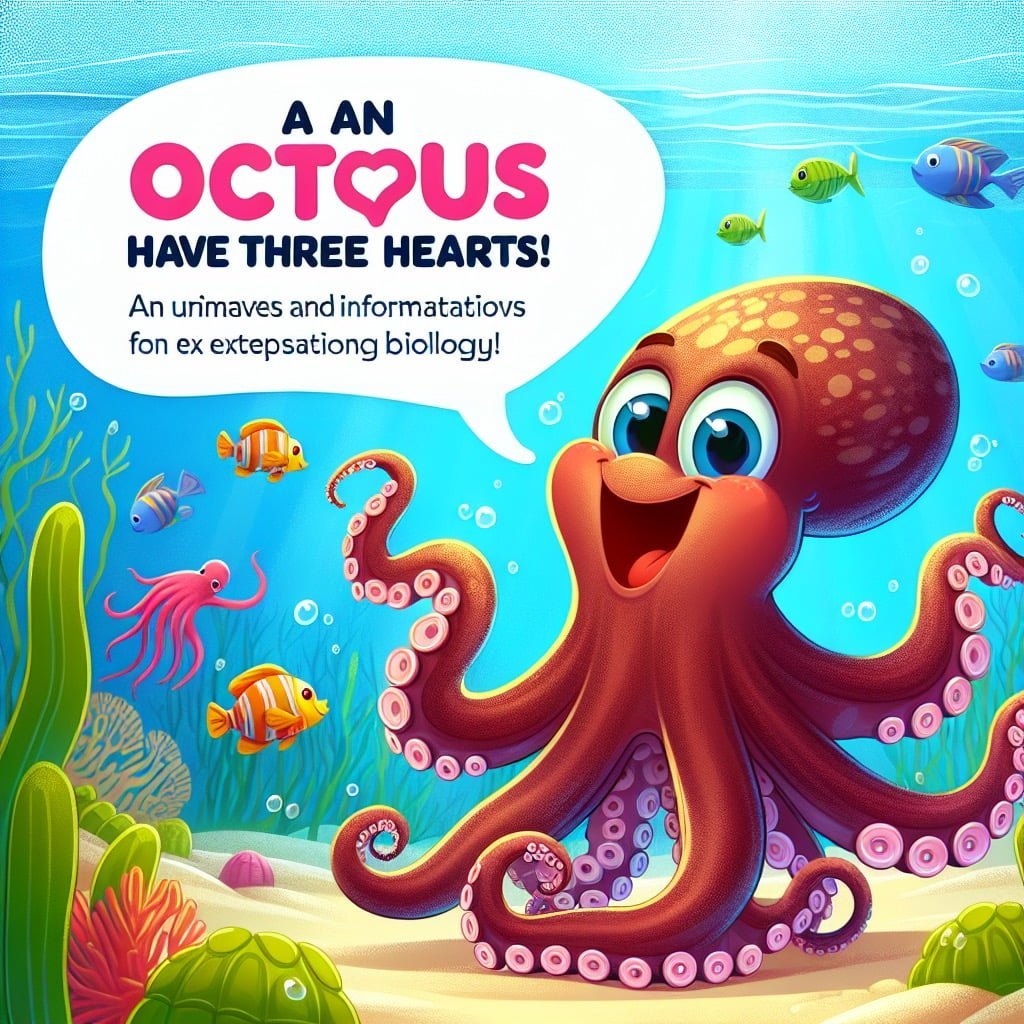
For younger kids: Octopuses have more hearts than humans!
For older kids: Octopuses have three hearts – two pump blood through the gills, and one circulates blood to the rest of the body.
Detailed explanation:Octopuses are fascinating creatures that live in the world’s oceans, known for their intelligence and unique characteristics. One of the most interesting facts about octopuses is that they have three hearts. This sets them apart from most other animals, including humans, who only have one heart.
Two of the hearts in an octopus are known as branchial hearts, which are responsible for pumping blood through the gills of the octopus. This is important for the octopus to obtain oxygen from the water in order to survive. The third heart is a systemic heart, which pumps blood to the rest of the body, delivering oxygen and nutrients to the octopus’s organs and tissues.
Having three hearts is a remarkable adaptation that allows octopuses to effectively circulate oxygenated blood throughout their bodies. This is crucial for their survival in the often challenging and changing environments of the ocean. By having separate hearts dedicated to different functions, octopuses are able to efficiently distribute oxygen and nutrients to all parts of their bodies, ensuring that they can thrive in their marine habitats.
In conclusion, the fact that octopuses have three hearts is a fascinating example of the unique adaptations that have evolved in the animal kingdom. It highlights the complexity and diversity of life on Earth, making it a great science fact for kids to learn about and marvel at.
Science Facts For Kids
6. Bananas Are Berries, but Strawberries Aren’t
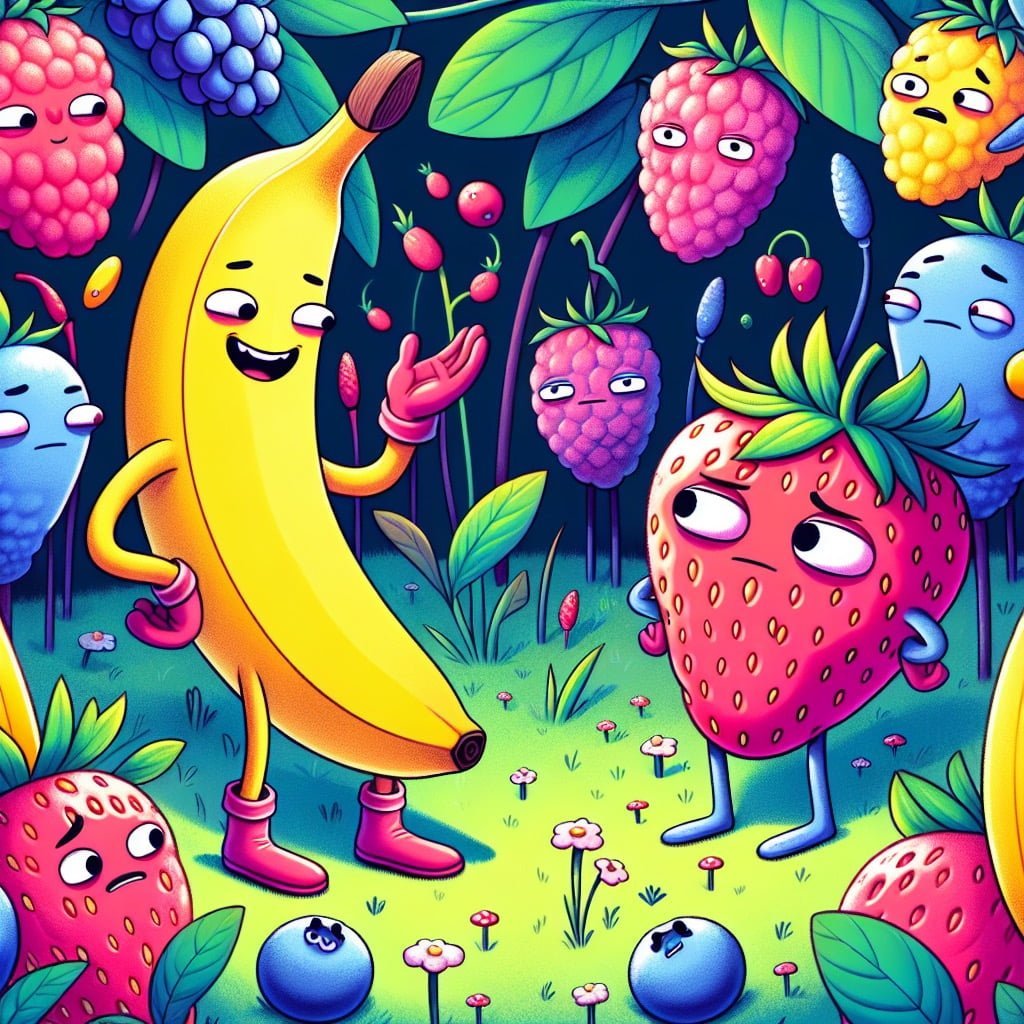
For younger kids: Bananas are actually berries, like a yummy fruit purse!
For older kids: In botanical terms, bananas are classified as berries because they develop from a single ovary, unlike strawberries, which aren’t true berries.
Detailed explanation:Many people may be surprised to learn that bananas are actually classified as berries, while strawberries are not. This fact may seem counterintuitive, as bananas are typically thought of as a fruit and strawberries are often associated with berries. However, the classification of fruits is based on botanical definitions rather than common perceptions.
In botanical terms, a berry is defined as a fleshy fruit produced from the ovary of a single flower with seeds embedded in the flesh. Bananas meet this criteria perfectly, as they develop from a single flower and contain numerous seeds within their flesh. This means that bananas technically fit the botanical definition of a berry.
On the other hand, strawberries do not meet the botanical definition of a berry. While they do develop from a single flower, their seeds are located on the outside of the fruit rather than inside the flesh. This means that strawberries are actually classified as aggregate fruits, rather than true berries.
This distinction between bananas and strawberries highlights the importance of understanding botanical classifications when it comes to fruits. While the term “berry” may be commonly associated with small, round fruits like strawberries, the botanical definition is much more specific.
In conclusion, despite their common perception as fruits, bananas are actually berries according to botanical definitions, while strawberries are not. This fact serves as a great example of how botanical classifications can sometimes be surprising and counterintuitive, but ultimately provide important insights into the diversity of plant species. Science facts for kids, like this one, can help to expand their understanding of the natural world and the different ways in which plants are classified.
Science Facts For Kids
7. Honey Never Spoils

For younger kids: Honey can stay good forever in the right conditions!
For older kids: Due to its low water content and acidic pH, honey can last indefinitely without spoiling, with some jars of honey unearthed from ancient Egyptian tombs still being edible.
Detailed explanation:Honey is a remarkable substance that has been used by humans for thousands of years, not only for its delicious taste but also for its incredible properties. One of the most fascinating facts about honey is that it never spoils. This means that if you were to find a jar of honey that had been sealed for hundreds or even thousands of years, it would still be perfectly safe to eat.
The reason behind this incredible longevity is the unique chemical composition of honey. Honey is primarily composed of sugars, such as glucose and fructose, which are hygroscopic, meaning they contain very little water. When bees make honey, they also add an enzyme called glucose oxidase, which produces small amounts of hydrogen peroxide when honey is diluted with water. This hydrogen peroxide, along with the low water content and acidic pH of honey, creates an environment that is inhospitable to bacteria and other microorganisms that would otherwise cause food to spoil.
In addition to its low water content and acidity, honey also contains natural preservatives such as phenolic compounds and antioxidants, which further inhibit the growth of bacteria and fungi. This combination of factors makes honey an incredibly shelf-stable product that can last indefinitely if stored properly.
So, the next time you reach for a jar of honey to sweeten your tea or drizzle on your toast, remember that you are not only enjoying a delicious treat but also marveling at the science behind this timeless food that truly never spoils. Science Facts For Kids truly are fascinating!
Science Facts For Kids
8. A Day on Venus is Longer than a Year

For younger kids: Venus has a really slow day – it spins very slowly
For older kids: A day on Venus, the hottest planet in our solar system, lasts longer than a year on Earth, taking around 243 Earth days to complete a full rotation.
Detailed explanation:Venus, often referred to as Earth’s “sister planet,” has a unique rotation that makes a day on Venus longer than a year. While Earth takes approximately 24 hours to complete one rotation on its axis, Venus takes about 243 Earth days to complete a single rotation. This means that a day on Venus is actually longer than a year on Venus, as it takes the planet about 225 Earth days to complete one orbit around the Sun.
This fascinating phenomenon is due to Venus’s retrograde rotation, which means that it rotates on its axis in the opposite direction to most other planets in our solar system. The slow rotation speed combined with the long orbit around the Sun results in this unusual day/year relationship.
Understanding these astronomical facts can be both mind-boggling and intriguing for Science Facts For Kids. Imagine experiencing an incredibly long day that lasts longer than a whole year! It’s a concept that can spark curiosity and wonder in young minds, encouraging them to explore the mysteries of our solar system and beyond.
By learning about these scientific wonders, kids can develop a deeper appreciation for the complexities of the universe and the incredible diversity of planets in our solar system. It also highlights the importance of questioning, observing, and researching to uncover the secrets of the natural world.
In conclusion, the fact that a day on Venus is longer than a year is a captivating demonstration of how the universe defies our everyday expectations. It serves as a reminder of the endless possibilities and surprises that await us when we delve into the realm of science and exploration.
Science Facts For Kids
9. Bees Communicate through Dancing
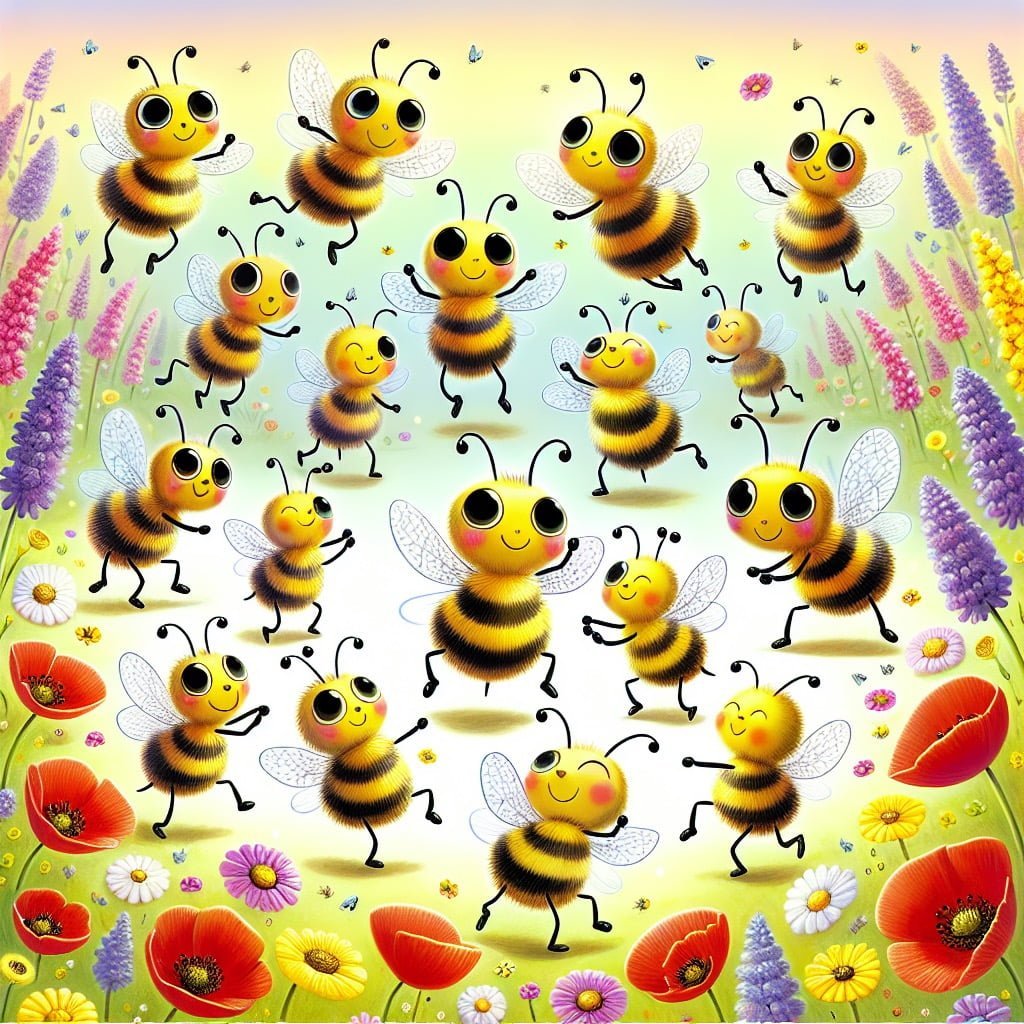
For younger kids: Bees dance to tell their friends where the yummy flowers are!
For older kids: Honeybees perform a unique ‘waggle dance’ to communicate the direction and distance of food sources to other hive members.
Detailed explanation:Bees are fascinating creatures that have developed complex ways of communicating with each other. One of the most interesting methods they use to communicate is through dancing. This behavior, known as the waggle dance, is a form of choreographed movement that conveys important information to other bees in the hive.
When a foraging bee discovers a new food source, such as a patch of flowers rich in nectar and pollen, it returns to the hive to share this valuable information with its fellow workers. The bee will perform a series of intricate dance moves on the honeycomb, including circular motions and figure-eight patterns. By varying the duration and direction of its dance, the bee is able to communicate the distance and direction of the food source relative to the position of the sun.
Other worker bees in the hive observe the waggle dance and decode the information embedded in the movements. Based on these signals, they are able to pinpoint the location of the food source and navigate their way to it. This remarkable form of communication allows bees to efficiently coordinate their foraging activities and optimize their collection of resources.
Understanding how bees communicate through dancing is not only a fascinating example of the complexities of the natural world, but it also highlights the importance of cooperation and teamwork in the success of a colony. By sharing this science fact with kids, we can inspire curiosity and appreciation for the incredible behaviors and abilities of the creatures that inhabit our planet. Science Facts For Kids like this one serve as a reminder of the wonders of the natural world and the incredible ways in which animals have adapted to thrive in their environments.
Science Facts For Kids
10. Rainbows are Full Circles

For younger kids: Rainbows are magical colorful arches in the sky!
For older kids: Rainbows are actually full circles, but the ground usually blocks the bottom half, so we see them as semi-circles in the sky.
Detailed explanation:Rainbows are one of nature’s most beautiful and mesmerizing phenomena. Contrary to popular belief, rainbows are actually full circles, not just arcs. When we see a rainbow in the sky, we are typically only seeing half of the circle, with the other half hidden below the horizon.
The science behind rainbows is truly fascinating. Rainbows are formed when sunlight is refracted, or bent, as it passes through raindrops in the air. This refraction causes the sunlight to separate into its component colors, creating the beautiful spectrum of colors that we see in a rainbow. The different colors of the rainbow are a result of the varying wavelengths of light being bent at different angles.
When the sunlight is refracted and reflected within the raindrops, it creates an optical illusion that makes it appear as though the rainbow is a semi-circle in the sky. However, if you were to view a rainbow from an airplane or a high vantage point, you would be able to see the full circle of the rainbow.
Rainbows are not only visually stunning, but they also serve as a great example of the intersection between science and beauty in nature. They are a perfect demonstration of the physics of light and color, making them an ideal topic to introduce to curious young minds. By explaining the science behind rainbows to children in a simple and engaging way, we can spark their interest in the natural world and foster a love of learning about the wonders of our universe.
In conclusion, rainbows are truly full circles, and understanding how they are formed can provide a deeper appreciation for the beauty of nature and the principles of science. Science Facts For Kids like this can inspire a lifelong passion for learning and exploring the world around us.
Did you know?
Did you know that it’s physically impossible for pigs to look up at the sky?
Summary of Science Facts For Kids
Are you looking for fascinating science facts to spark the curiosity of your kids? Look no further! In this blog post, we cover a range of interesting topics that are sure to captivate young minds. From discovering that the Sun is a star and learning why sound can’t travel in space to exploring why lightning is hotter than the Sun and how koalas have unique fingerprints just like humans, there’s something for everyone to enjoy. Did you know that octopuses have three hearts or that bananas are classified as berries? And how about the fact that honey never spoils or that a day on Venus is longer than a year on Earth? These fun and educational tidbits will not only entertain your children but also inspire them to delve deeper into the wonders of science. So, why wait? Dive into these science facts for kids and ignite a love for learning in your little ones!
Sources and additional information for Science Facts For Kids
WikipediaBritannicaScienceDirectNatureScientific AmericanNew ScientistNational Science FoundationScience NewsThe Royal SocietyLive ScienceScience MagazinePLOS ONENational Geographic KidsNASALive ScienceScientific AmericanNational Science Foundation (NSF)The Royal SocietyAmerican Association for the Advancement of Science (AAAS)Khan AcademyExploratorium

